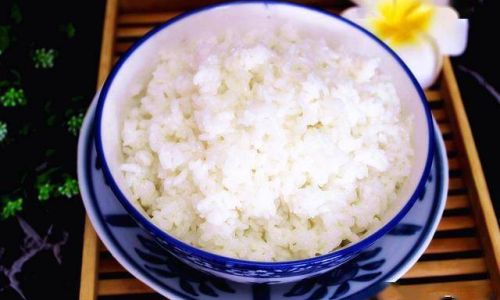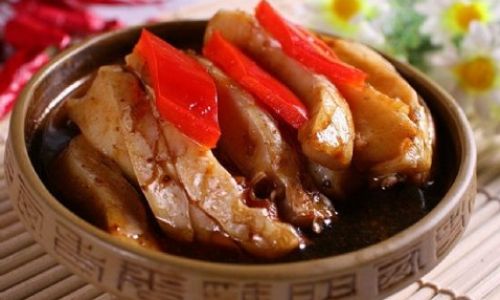Rice, a staple food in countless cultures around the world, is celebrated not just for its versatility but also for its ability to transform a simple meal into a comforting, satisfying experience. While boiling rice might seem straightforward, mastering the technique of steaming rice to achieve the ideal texture—tender yet distinct grains, fluffy and aromatic—requires attention to detail, patience, and a touch of culinary finesse. This article delves into the science and craft of steaming rice, exploring methods, tips, and secrets to elevate this humble grain into a dish that tantalizes the senses.
The Foundation: Choosing the Right Rice
Before diving into cooking techniques, it’s essential to understand that not all rice is created equal. The variety of rice—long-grain, short-grain, jasmine, basmati, sushi rice, or arborio—dictates the ideal cooking method and water-to-rice ratio. For instance, long-grain varieties like basmati or jasmine rice are prized for their fragrant aroma and separate grains, making them perfect for pilafs or stir-fries. Short-grain rice, such as sushi rice, becomes sticky when cooked, ideal for sushi rolls or rice bowls.
Key Considerations When Selecting Rice:

- Age of the Rice: Newer rice tends to be moister and may require slightly less water, while older rice absorbs more liquid.
- Quality: Opt for high-quality rice free of debris or broken grains, as this ensures even cooking.
- Aroma: Varieties like jasmine or basmati offer natural floral or nutty notes, enhancing the dish without additional seasonings.
The Ritual of Rinsing: Why It Matters
Rinsing rice before cooking is a step often overlooked but critical to achieving pristine results. This process removes excess starch from the grains’ surface, preventing clumping and ensuring a lighter, fluffier texture.
How to Rinse Rice Properly:
- Place the desired amount of rice in a fine-mesh strainer or bowl.
- Rinse under cold running water, gently agitating the grains with your fingers.
- Repeat until the water runs clear—typically 2–3 rinses.
Avoid over-rinsing, as this may strip the rice of essential nutrients and flavor compounds.
The Golden Ratio: Water to Rice
The water-to-rice ratio is the cornerstone of perfectly steamed rice. While general guidelines suggest a 1:2 ratio (1 cup rice to 2 cups water), adjustments may be necessary based on rice type, age, and desired texture.
Tips for Precision:
- For fluffy, separate grains: Use slightly less water (e.g., 1:1.75 for basmati).
- For softer, stickier rice: Increase water to 1:2.25 (e.g., sushi rice).
- Altitude Adjustments: At high elevations, water boils at lower temperatures, requiring slight reductions in liquid.
Soaking: The Secret to Even Cooking
Soaking rice before cooking hydrates the grains, reducing cooking time and promoting uniform texture. This step is particularly beneficial for thick or aged rice, which may take longer to soften.
Soaking Guidelines:
- Short-grain rice: Soak for 15–30 minutes.
- Long-grain rice: Soak for 20–40 minutes.
- Brown or wild rice: Soak for 2 hours or overnight to reduce cooking time.
Pro Tip: Add a pinch of salt to the soaking water to enhance flavor penetration.
Cooking Methods: Stovetop, Rice Cooker, and Beyond
Stovetop Steaming
The stovetop method offers unparalleled control, making it ideal for seasoned cooks.
Step-by-Step Guide:
- Combine rice and water in a heavy-bottomed pot with a tight-fitting lid.
- Bring to a boil over medium-high heat, uncovered.
- Reduce heat to low once boiling, cover, and simmer for 15–20 minutes (adjust based on rice type).
- Remove from heat and let rest, covered, for 10 minutes to allow steam to redistribute.
- Fluff gently with a fork to separate grains.
Rice Cooker Magic
Modern rice cookers automate the process, ensuring consistency with minimal effort.
Optimizing Your Rice Cooker:
- Use the measuring cup provided (often 180ml) for accurate ratios.
- Add a teaspoon of oil or a knob of butter to prevent foaming and enhance sheen.
- Experiment with settings (e.g., “quick cook” vs. “sticky rice”) based on your model.
Traditional Bamboo Steamer Method
For an authentic touch, especially with sticky rice, a bamboo steamer imparts a subtle earthy flavor.
Technique:
- Soak rice for 4–6 hours.
- Drain and transfer to a cheesecloth-lined steamer basket.
- Steam over boiling water for 30–45 minutes, or until tender.
Enhancing Flavor: Beyond Plain Rice
While perfectly cooked rice is delicious on its own, elevating its profile with aromatic additions can turn a side dish into a star.

Flavor-Boosting Ideas:
- Infused Water: Simmer rice in broth, coconut milk, or tea (e.g., jasmine tea for basmati).
- Aromatics: Add pandan leaves, lemongrass, garlic, or ginger to the cooking liquid.
- Spices: Toast cumin, cardamom, or cinnamon with rice before adding water.
- Herbs: Stir in chopped cilantro, mint, or basil post-cooking for freshness.
Troubleshooting Common Issues
Even seasoned cooks encounter hiccups. Here’s how to fix them:
-
Mushy Rice:
- Cause: Excess water or overcooking.
- Fix: Reduce water by 1–2 tablespoons next time. Spread cooked rice on a baking sheet to dry slightly.
-
Undercooked Grains:
- Cause: Insufficient water or heat too high.
- Fix: Sprinkle 1–2 tablespoons of water over rice, cover, and steam on low for 5 minutes.
-
Burnt Bottom:
- Cause: Heat too high or pot too thin.
- Fix: Use a diffuser or invest in a heavy-based pot. Monitor closely during simmering.
-
Uneven Cooking:
- Cause: Uneven heat distribution.
- Fix: Stir rice gently halfway through cooking (for stovetop method) or use a heat diffuser.
Storage and Reheating: Preserving Perfection
Leftover rice can be a gift—if stored and reheated correctly.
Storage Tips:
- Cool rice quickly to prevent bacterial growth. Spread on a baking sheet and refrigerate within 2 hours.
- Store in an airtight container for up to 4 days.
Reheating Methods:
- Stovetop: Add a splash of water, cover, and heat gently over low heat.
- Microwave: Place rice in a bowl with a damp paper towel; microwave in 1-minute intervals.
- Oven: Reheat at 300°F (150°C) in a covered dish for 15–20 minutes.
The Cultural Tapestry of Rice
Rice is more than sustenance—it’s a symbol of hospitality, tradition, and identity. In Japan, the act of preparing rice (okome) is revered as an art form, with chefs training for years to perfect the balance of moisture and texture. In India, fragrant basmati rice is paired with biryanis and pulaos, each grain coated in aromatic spices. In Latin America, arroz con gandules represents pride and heritage.
By mastering the steaming process, you honor these traditions while creating your own culinary legacy.
Conclusion: The Journey to Rice Mastery
Steaming rice to perfection is a dance of precision and intuition. It begins with selecting the finest grains, continues with mindful preparation, and culminates in a dish that nourishes both body and soul. Whether you prefer the simplicity of a plain steamed bowl or the complexity of a saffron-infused pilaf, the principles remain the same: respect the grain, control the elements, and savor the results.
As you embark on your rice-steaming journey, remember that practice is the greatest teacher. Experiment with varieties, adjust ratios, and embrace the occasional misstep as part of the process. Soon, you’ll find yourself effortlessly crafting plates of rice that are not just cooked—but celebrated.
So, the next time you hear the gentle sizzle of rice meeting water, take a moment to appreciate the alchemy unfolding in your kitchen. For in that humble pot lies the potential for a meal that transcends ordinary, turning a single grain into a symphony of flavor and texture. Happy steaming!





0 comments